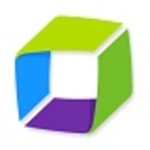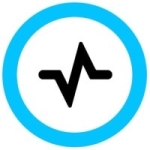My customers use the solution for user behavior analytics and as an anti-malware and anti-threat kind of tool. My customers are in finance-related areas. I deal with some gambling companies, and in my country, it is categorized under the finance sector.
The solution's features include good visibility of events, faster response to threats, and advanced ability to analyze events and data. In general, the visibility of events and advanced analysis of events are good.
The tool needs to improve the implementation part and have a virtual list of files for a virtual appliance or something like that because it is a very complicated area when it comes to implementation. There are a lot of pieces that need to be installed and prepared, and, of course, there is a need for virtual resources. The tool must offer better virtual resources and prepare some virtual appliances with some ISO or VMDK files. I don't care, but the solution must do something to improve the product. There are too many things that are complicated during the implementation phase.
I have been using LogRhythm SIEM for a year. I use the solution as a partner.
Stability-wise, I rate the solution an eight out of ten.
It is a highly scalable solution. Scalability-wise, I rate the solution a ten out of ten.
From LogRhythm's perspective, my company deals with small to medium businesses.
The solution technical support team provides quick answers to any request. The team's knowledge and way of resolving issues are also fast. We haven't had any problems reaching out and getting the support we need for the tool. I rate the technical support a ten out of ten.
The product's initial setup phase is pretty complex. The tool offers good guidance, and everything else is clear, but there are a lot of steps involved in the implementation. From the client's end, there is a need to include a lot of people, like system admin, DB admin, and network admin. Sometimes, I think the tool needs to improve something in the area of the setup phase so that there aren't difficulties during the implementation process.
If ten means easy setup and one means difficult, I rate the product's installation phase a four out of ten.
The solution is deployed on an on-premises model.
If everything is prepared already, the solution can be deployed in one or two days. In the end, there are a lot of things that you need to prepare before starting the tool's use, so it takes two to five days for the initial deployment, but after that the installation processes take just two days.
For my customer, I think the tool is reasonably priced. I think the tool is reasonably priced. There is a need to pay per year towards the licensing costs of the tool. From what I heard, the tool has a very reasonable price, and users pay on a yearly basis for its licensing charges.
Speaking about how LogRhythm SIEM influences operational costs, or if it does have any security efficiency, I would say that I don't work with the tool every day to know what the operational cost benefit is. In any case, with fewer people, the tool has better visibility. There is a need for three or four people in a team for SIEM. The tool ensures better efficiency of the team by improving costs, but I am not very sure how to explain it as the tool has centralized events as it is spread out geographically with a lot of branches. We get a better understanding of the networks in different countries with the centralization part, improving the efficiency of the SIEM team.
With LogRhythm SIEM, there is a need to deal with a lot of customized services. The tool spends a lot of time with professional services for customization. The good part is that the support team finishes their job very quickly and offers very good responses when it comes to the area of customization. There was a little disappointment since the tool did not have some of the parsers for some systems in the environments, like IBM, which was a surprise. In any case, support did the job, as there were tons of customizations needed. We were able to deal with the customization area and resolve the issue around it, making it a very customizable tool. It is a very flexible tool. I spend a lot of time with the support team doing the customizations. Customizations take a lot of time, but they are still a plus.
I have not noticed any AI elements in LogRhythm SIEM.
I recommend the tool to others.
It is a perfect search engine, and every report is analyzed really quickly and in a straightforward manner. The tool has an easy GUI, and it is the perfect choice for security analysts. The tool has consoles, including an administrative console and a web console. For some people, that can be a problem. I think it is really good when you have administrative guys who deal only with the solution and analysts who deal only with the analyzed part without some preparation for the core configuration. Everyone can deal with the day job. For me, the tool is advanced, but maybe for others, it can be an issue. In any case, it is really visible to others for documentation. The tool is scalable and really operational. The tool is easy to use and for sizing. In the end, it is a good tool. In the Serbian market, most of the tools demanded are on-premises. When it comes to the on-premises solution, I think LogRhythm is one of the best tools. We are a little different than the other parts of the world. Everyone wants to go to the cloud, but here, everything wants to be kept on an on-premises model. The market in Serbia is very strange because we aren't a part of the European Union, and so, with regard to compliance, we always have some problems. The companies in Serbia like to have on-premises solutions because most financial institutions, banks, or government institutions have data centers, so they won't go to the cloud. In Serbia, we don't like to deal with cloud solutions, especially when the data needs to be consumed somewhere in the cloud because the biggest problem is the cost of cloud solutions for SIEM tools. Most of the applications and everything is also hosted on-premises in Serbia. Normally, the SIEM tools are used in an on-premises model.
I rate the tool a nine out of ten.




















